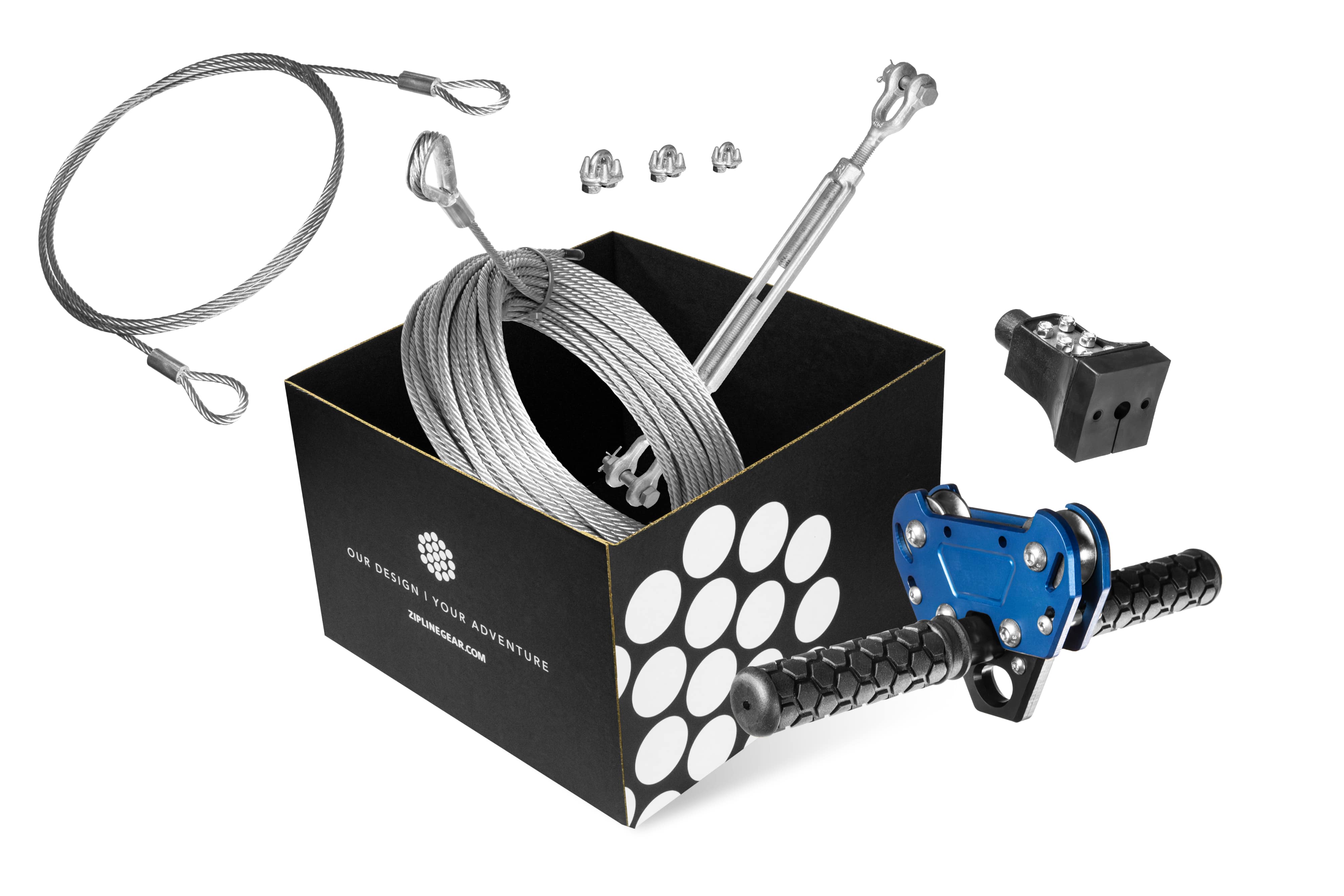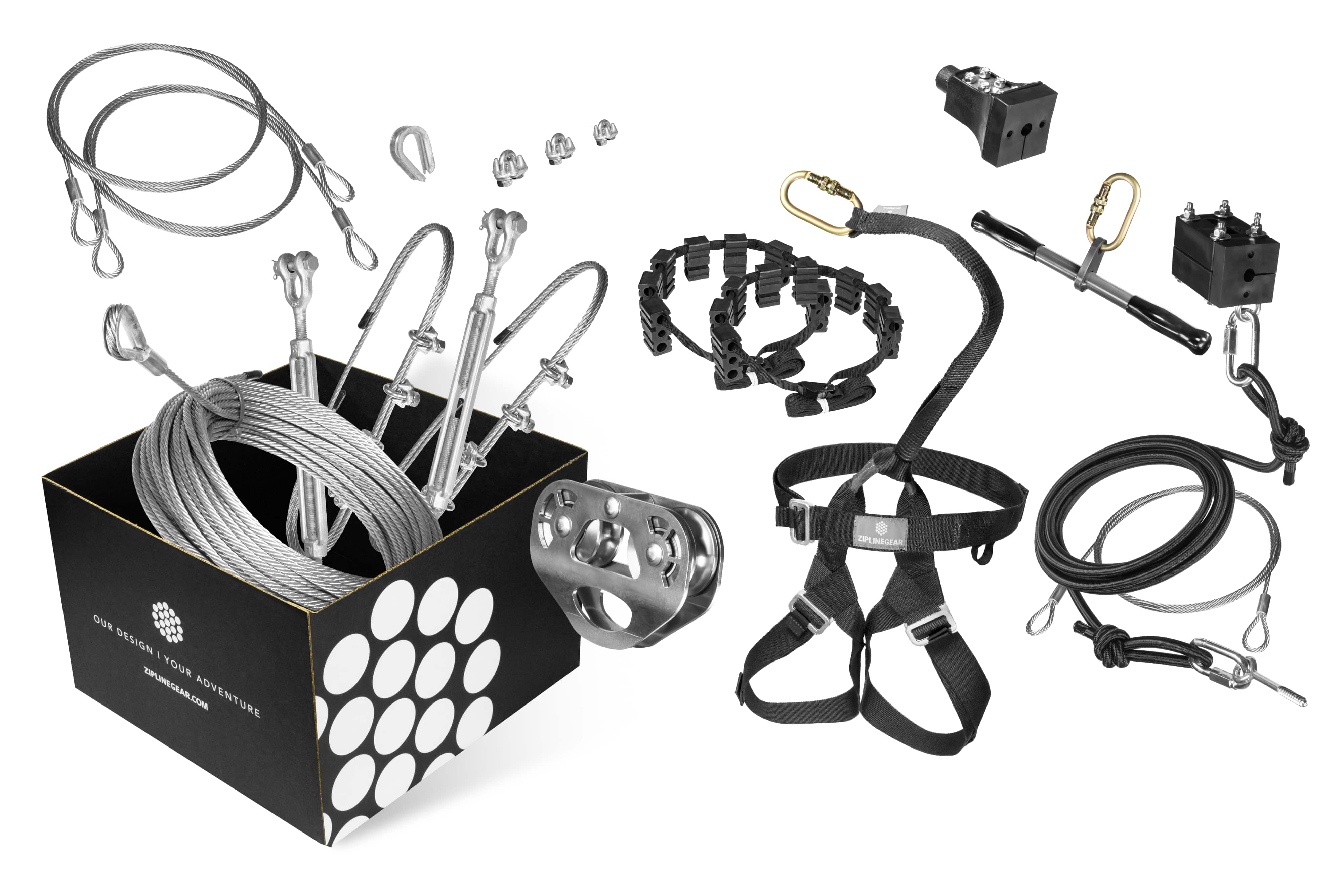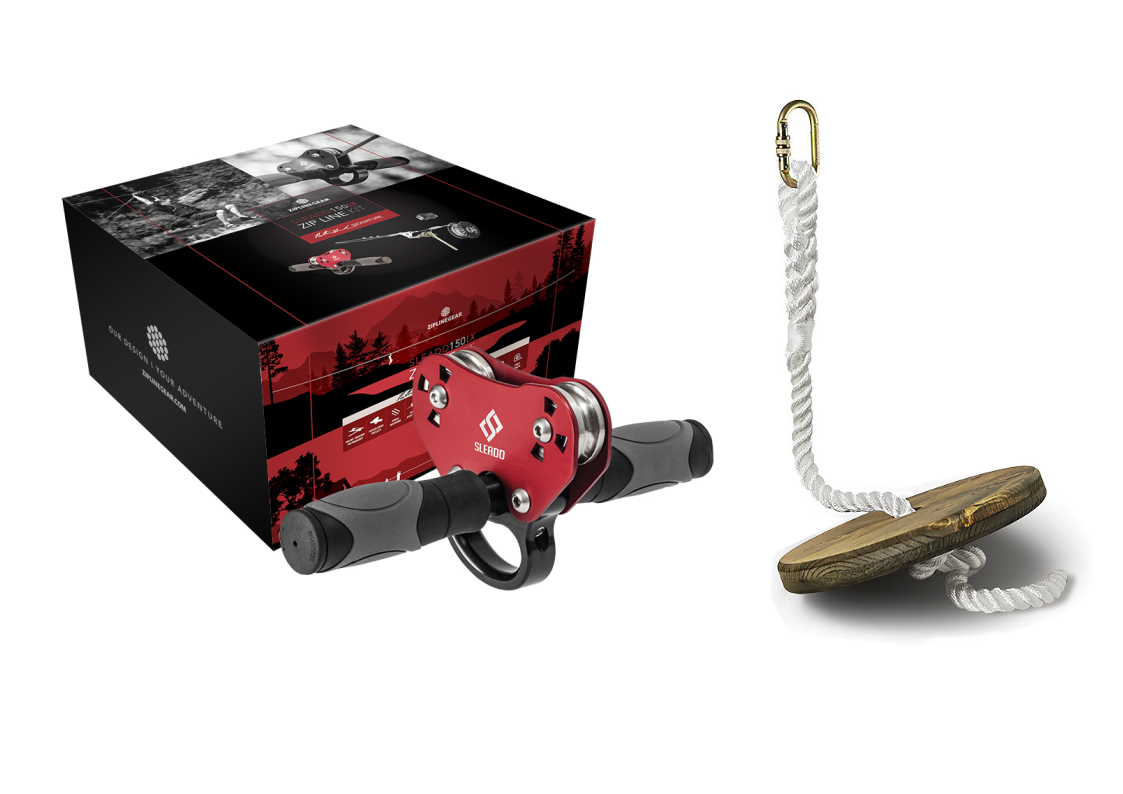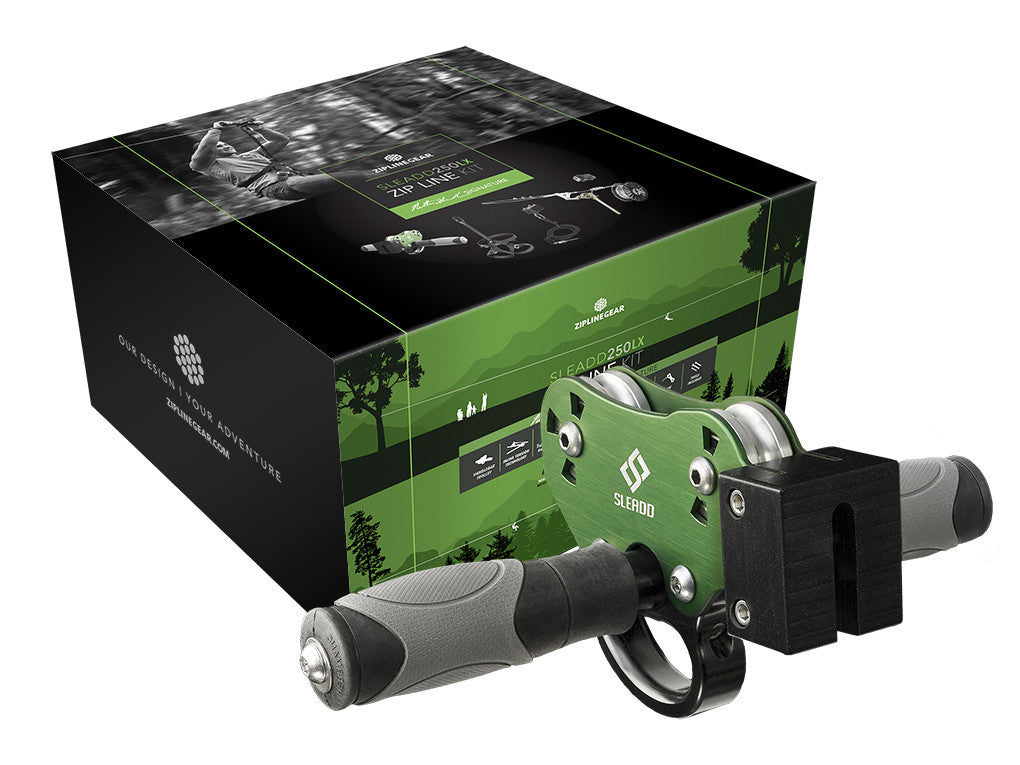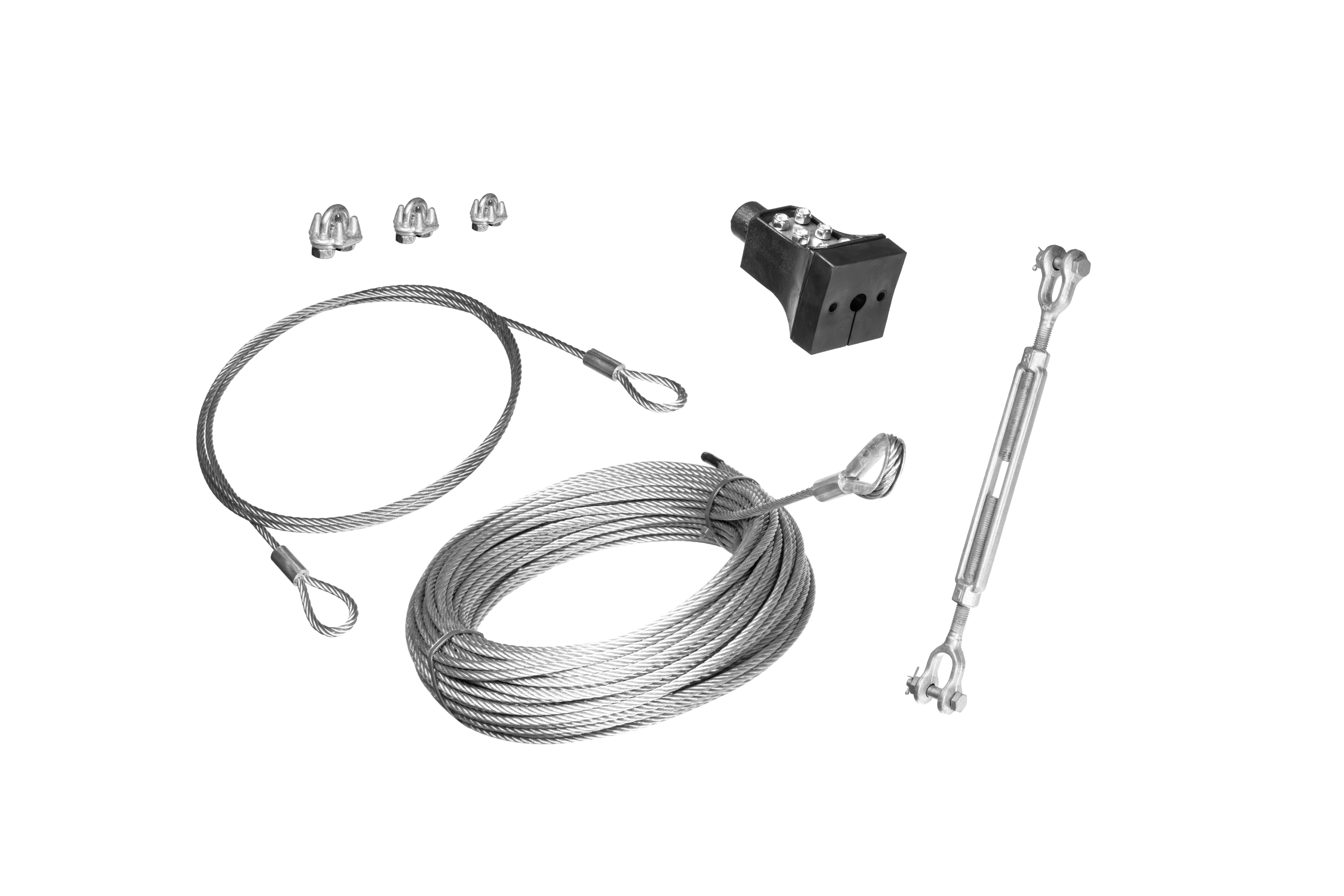Knowledge Base - Braking
HOW TO STOP YOUR ZIP LINE RIDER - BRAKING

There are two categories: Passive Braking and Active Braking.
An Active (applied manually by hand) Brake is one that must be actuated by the rider. A Passive, or Automatic Brake engages without the action of the rider. The Manual Brake gives the riders more control and an option to stop in a specific place on the cable or on a platform at the very end. The Automatic Brake is considered a better fit for younger riders who may not have the skill to brake manually. In either case, use a stop block as a no-pass point mounted directly to the cable.
SHOP BRAKING
ACTIVE BRAKING |
|
|
Leather Glove The most common active zip line brake is a leather glove worn on the participant’s hand and used to push down on the zip line cable and create friction, slowing the rider down. Proper training and practice is necessary for a rider to know how to safely bring themselves to a stop. |
|
|
BrakeHawk Braking System The BrakeHawk utilizes a patent-pending design that clips onto the Rogue, Petzl Tandem Speed, Petzl Trac, and Petzl Trac Plus trolleys. This active braking device is great for both backyard and commercial zip lines, as it keeps hands free of the cable and puts the power of braking firmly in the hands of the rider. The rider engages the brake by pulling down on the BrakeHawk and creating friction between the zip line cable and the BrakeHawk brake pad.
|
|
PASSIVE BRAKINGPassive zip line brakes are essentially speed-reduction systems that require no input from the rider. In other words, a passive brake will stop a rider even if they are squealing with delight and forget to stop themselves. There are several types of passive brakes, so we’ll run through a few of the most common and explain how they work. |
|
|
Bungee Brake The Bungee Brake utilizes a padded block that mounts on the cable near the end of the zip line and slides freely on the cable. A length of a heavy-duty BUNGEE cord. Usually 20' or 30' is connected to the block and the other end is anchored to an adjacent tree or post. When riding the zip line, the trolley bumps into the BUNGEE block and pushes it down the cable, expanding the BUNGEE cord until all of the momentum is absorbed. The BUNGEE then will retract and bring the rider back to the low point of the zip line cable where the rider can dismount. This method is very common and practical for most backyard zip lines if there is no need to end up on a landing platform that is located at the very end of the run. |
|
|
Spring A spring stop operates much like a bungee brake, but without the need for an anchor off to the side of the zip line. The spring compresses, absorbing the inertia of the rider, and then pushes the rider back out. Some higher end commercial zip lines utilize multiple springs, and the impact pad has a one-way cam that prevents the spring from pushing back out until the rider has been unclipped. There are many guages of springs, ranging in size and absorb capacity. For residential applications we suggestion using a spring stop with a 3% riding slope to cushion impact between trolley and Stop Block. |
|
|
Tire Auto or wheel-barrow tires can be used as an end bumper (stop block) when a zip line has little to no speed at the end. The stopping distance is only as big as the diameter of the tire, so it’s really not as much about slowing you down as it is about protecting your equipment on impact and creating a no-pass barrier on the cable. This is very common for over-water zip lines where riders should not be allowed to pass a certain point and risk landing in shallow water. Tire stops also provide an effective back-up for a bungee brake, ensuring that the bungee is not over extended and preventing riders from hitting the anchor even if the bungee were to fail. A Cable Clamp should be placed behind the tire to prevent it from sliding. |
|
|
Capture Block A capture block operates similarly to a bungee brake, except that instead of bungee cord, a rope is attached to the block, and friction is applied to the rope to absorb the rider’s inertia. No recoil. It is also common for the block to ‘capture’ the trolley to allow for the rider to be towed in the rest of the way in case he or she stopped too soon. This could technically be called an active brake because the friction is applied manually by a guide, but it still acts independently of the participant. This method is used almost exclusively by commercial locations with trained guides, and boasts one of the best through-put rates (riders per hour), lowest number of rescues (people who don’t make it all the way across and have to be retrieved), and most dynamic braking resistance (guides can instinctively apply the necessary amount of friction to match the rider’s weight and momentum). |
|
|
Gravity Brake A gravity brake is basically… no brake at all. A zip line cable can be installed and tensioned in such a way that a rider will not have enough momentum to carry them to the end of the zip line. This can be achieved through a large amount of sag (lots of uphill cable at the end), or reducing the overall drop of the cable end-to-end. Have More Questions? If you're wondering about your specific application for your backyard zip line just give us a call. We've helped thousands of customers all over the world with their zip lines. 1-888-476-3701 |
|
- Choosing a selection results in a full page refresh.
